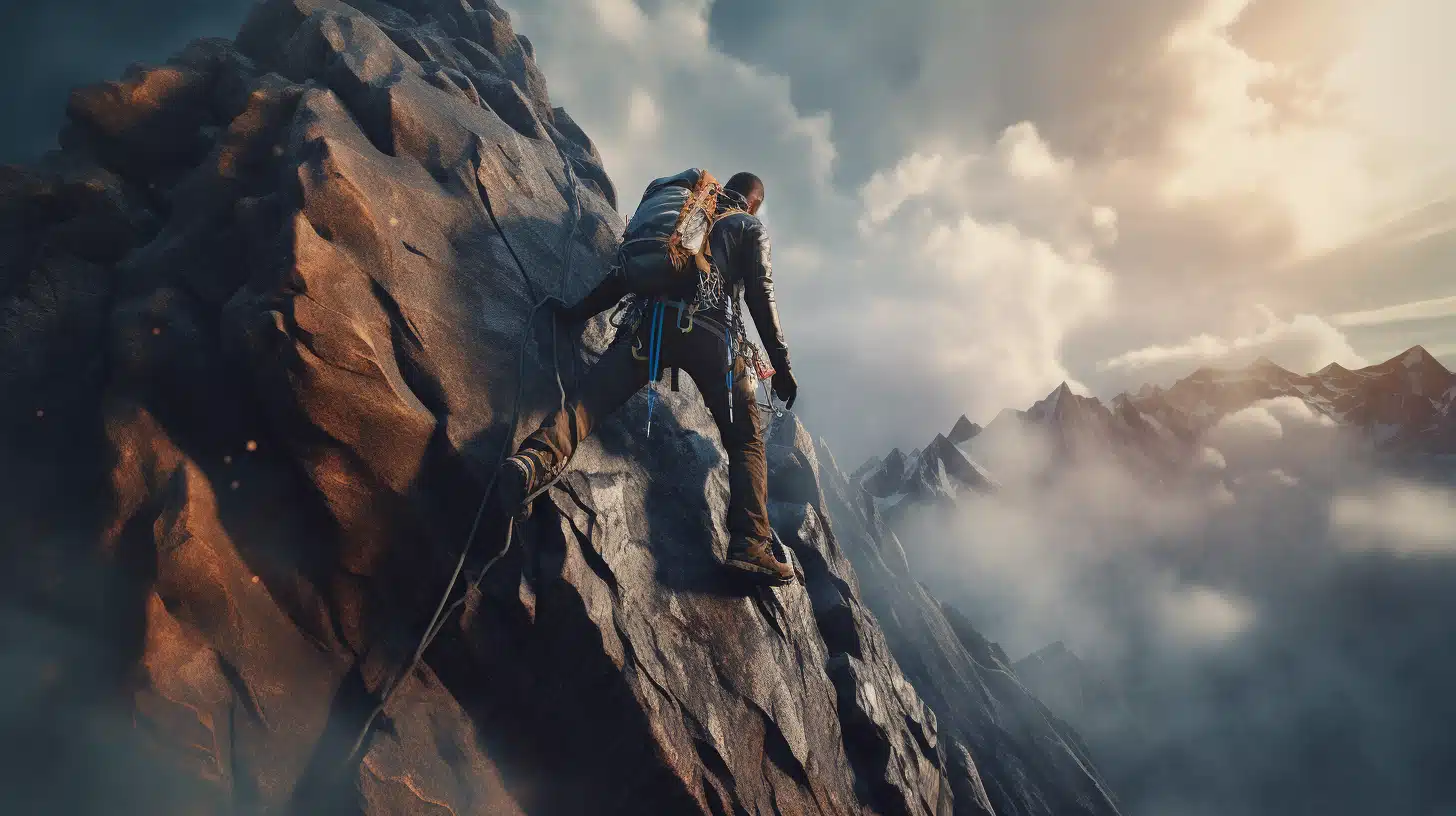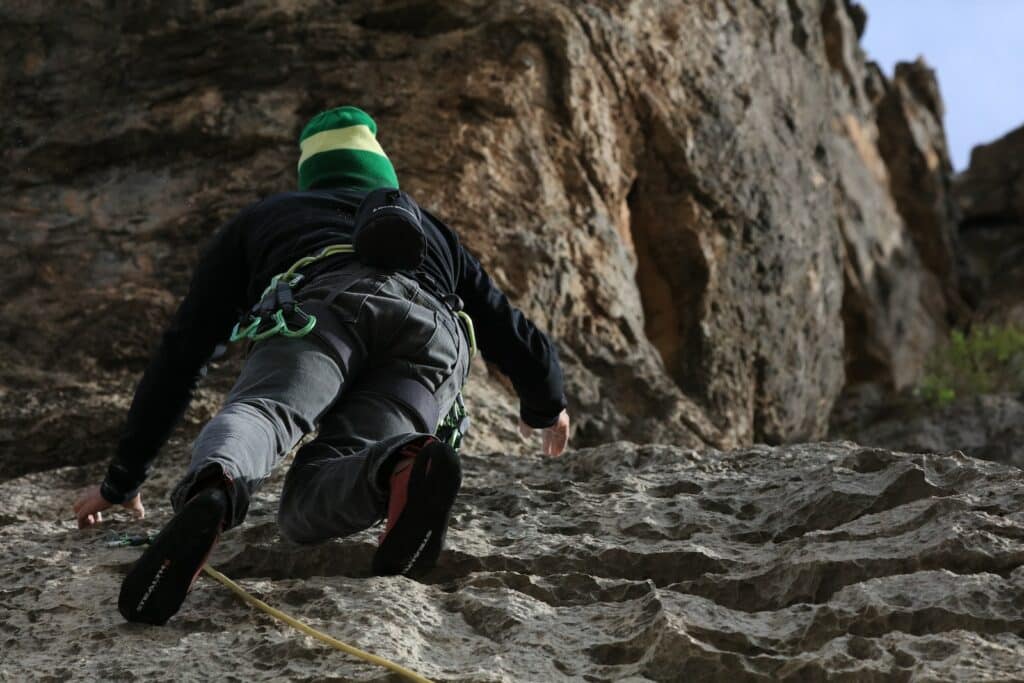Table of Contents
ToggleIntroduction to Trad Climbing
What is Trad Climbing?
Trad climbing, short for traditional climbing, is a style of rock climbing where climbers place their own protection, such as nuts and cams, into the cracks and crevices of the rock to support their weight and protect against falls (REI). Unlike sport climbing, where fixed bolts are used for protection, trad climbing routes require climbers to have a good understanding of placing gear and assessing the quality and strength of the rock to ensure their safety (REI).
Traditional climbing routes are often characterized by their natural features, such as cracks, flakes, and fissures, which provide opportunities for placing gear (REI). Protection in trad climbing is not fixed; climbers must remove their gear as they progress, so other climbers can follow the same route (REI). This style of climbing offers a sense of adventure and self-reliance, as climbers must rely on their own skill and judgment to protect themselves (Climbing.com).
The Appeal of Trad Climbing
Trad climbing attracts climbers for a variety of reasons. One of the main appeals is the opportunity for exploration and the ability to climb routes that may not have fixed protection. Traditional climbing routes offer a wide range of difficulty levels, from beginner-friendly routes to extremely challenging ones, providing opportunities for climbers of all skill levels to enjoy the sport (REI). The freedom to choose gear placements and navigate the natural features of the rock adds an extra level of challenge and problem-solving to each climb.
Trad climbing can also be a deeply rewarding experience. The self-reliance required in placing gear and protecting oneself can build confidence and a sense of accomplishment. It allows climbers to forge a deeper connection with the rock and the environment, as they must carefully assess the rock quality and make decisions about route finding (Climbing.com). The mental and physical challenges involved in trad climbing can push climbers to their limits and foster personal growth.
For those seeking a more adventurous and diverse climbing experience, trad climbing provides a gateway to explore a wide variety of routes and locations. From the classic cracks of Yosemite National Park to the exposed faces of Eldorado Canyon, trad climbing destinations offer breathtaking scenery and unique challenges.
As you embark on your trad climbing journey, it’s important to develop essential skills, acquire the right gear, and prioritize safety. In the next sections, we will explore the necessary skills for trad climbing, the gear required, and provide tips for beginners to get started on their trad climbing adventures.
Top Trad Climbing Destinations
When it comes to exploring the best trad climbing routes, there are several incredible destinations to consider. These locations offer a wide range of routes, varying in difficulty and scenic beauty. Whether you’re a beginner or an experienced climber, these top trad climbing destinations are sure to satisfy your adventurous spirit.
Eldorado Canyon, Colorado
Eldorado Canyon in Colorado is renowned as one of the best trad climbing areas in the United States. With its stunning sandstone cliffs and over 1,000 routes of varying difficulty, it has something to offer climbers of all levels. The canyon’s classic lines, such as the Naked Edge and the Bastille Crack, have earned their place in climbing history. Eldorado Canyon provides a beautiful and challenging trad climbing experience for those seeking adventure in the heart of the Rocky Mountains. For more information on trad climbing in Eldorado Canyon, visit our article on trad climbing in Eldorado Canyon.
The Gunks, New York
The Gunks, located in New York’s Shawangunk Mountains, is a world-class trad climbing destination. With its unique quartz conglomerate cliffs, The Gunks offers over 1,000 routes that cater to climbers of all abilities. From beginner-friendly single-pitch climbs to challenging multi-pitch classics like High Exposure and Madame G’s, The Gunks presents a diverse range of trad climbing opportunities. The stunning views and picturesque landscapes make this destination a favorite among climbers. To learn more about trad climbing in The Gunks, check out our comprehensive guide on trad climbing in The Gunks.
Yosemite National Park, California
Yosemite National Park in California is synonymous with iconic trad climbing. It is home to legendary walls like El Capitan and Half Dome, which have captured the imaginations of climbers around the world. With its granite cliffs, Yosemite offers a wide variety of trad climbing routes for all skill levels. Climbing classics like The Nose, Salathé Wall, and Snake Dike showcase the park’s natural beauty and provide unforgettable trad climbing experiences. For more information on trad climbing in Yosemite National Park, visit our article on trad climbing in Yosemite.
Joshua Tree National Park, California
Joshua Tree National Park in California is a desert paradise for trad climbers. Its unique monzogranite formations create a playground of cracks and face climbs that attract climbers from around the world. From classic routes like The Eye to hidden gems like The Flake, Joshua Tree offers a diverse range of trad climbing experiences. The park’s otherworldly landscape, featuring Joshua trees and vast desert vistas, adds to the allure of climbing in this iconic destination. To learn more about trad climbing in Joshua Tree National Park, visit our comprehensive guide on trad climbing in Joshua Tree.
Red Rocks Canyon, Nevada
Red Rocks Canyon in Nevada is a trad climber’s paradise. With its stunning sandstone cliffs and more than 2,000 routes, Red Rocks offers endless opportunities for trad climbing adventures. From classic multi-pitch climbs like Birdland to challenging testpieces like Epinephrine, this destination caters to climbers of all abilities. The breathtaking views of the Mojave Desert and the vibrant red rock formations create a truly awe-inspiring backdrop for your trad climbing endeavors. For more information on trad climbing in Red Rocks Canyon, visit our article on trad climbing in Red Rocks.
Lofoten (Honorable Mention)
Lofoten, an archipelago in Norway, deserves an honorable mention as a spectacular trad climbing destination. Its towering granite walls, surrounded by the dramatic Arctic landscape, provide a unique and unforgettable climbing experience. The variety of routes, from single-pitch to multi-pitch, offers something for climbers of all levels. The stunning views of fjords and mountains make Lofoten a true gem in the trad climbing world.
Index (Honorable Mention)
Index, located in Washington State, is another honorable mention on our list. This granite climbing area offers a wealth of trad climbing routes, with its unique cracks and boulders challenging climbers of all abilities. The scenic beauty of the Skykomish River Valley adds to the allure of climbing in this hidden gem.
These top trad climbing destinations offer a wealth of routes and experiences for climbers of all skill levels. Whether you’re seeking a challenging multi-pitch adventure or a scenic single-pitch climb, these destinations will surely satisfy your trad climbing cravings. So grab your gear, explore these incredible locations, and conquer the heights of trad climbing.
Essential Skills for Trad Climbing
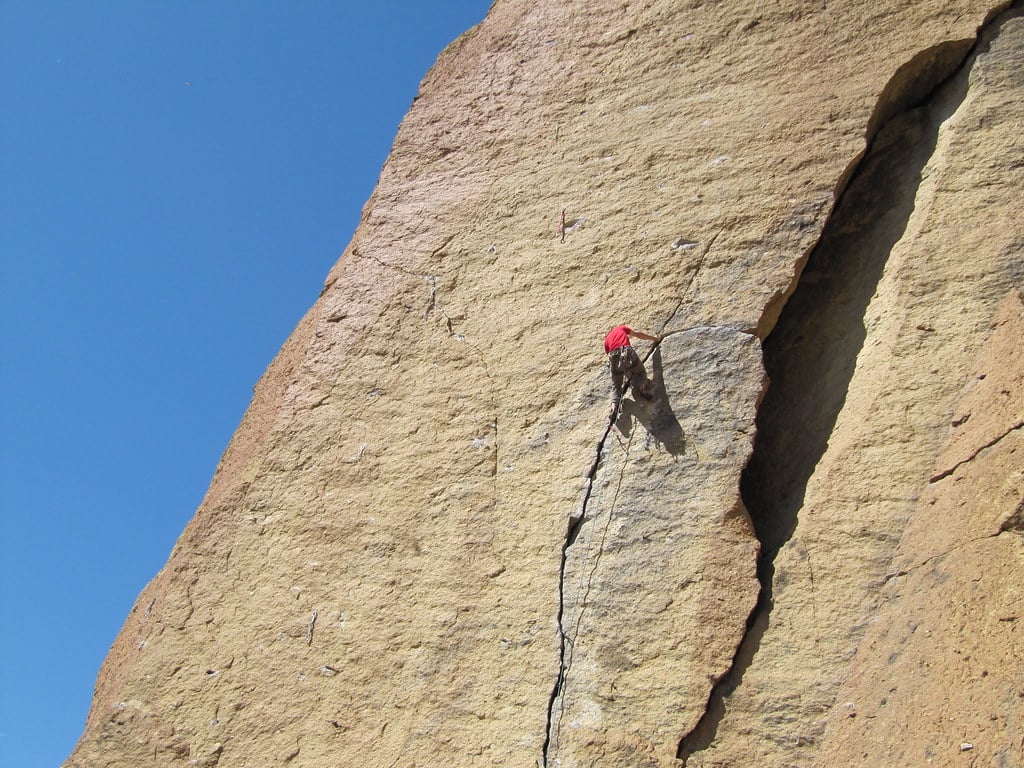
Trad climbing requires a specific set of skills and knowledge to ensure a safe and enjoyable climbing experience. Whether you’re a beginner or an experienced climber, understanding these essential skills is crucial. Let’s explore three key skills for trad climbing: placing gear and protection, assessing rock quality, and route planning and finding.
Placing Gear and Protection
One of the fundamental skills in trad climbing is the ability to place gear and protection. Trad climbers rely on their own gear placements to protect themselves as they ascend the route. This includes placing cams, nuts, slings, and other protective devices into cracks, pockets, or other features of the rock. Proper gear placement is essential for maintaining safety during a climb. It requires an understanding of the different types of gear, how they work, and where to place them for optimal protection.
To learn more about trad climbing gear and their placement techniques, check out our article on trad climbing gear placement. It provides detailed information on the types of gear used in trad climbing, such as cams, nuts, and slings, and offers guidance on how to effectively place them for maximum security.
Assessing Rock Quality
When trad climbing, it’s important to assess the quality and strength of the rock you’ll be climbing on. This skill helps you identify potential hazards, such as loose or unstable rock, and make informed decisions about which sections of the route to trust for gear placements. Assessing rock quality involves evaluating the stability, integrity, and overall condition of the rock face, cracks, and holds.
To enhance your ability to assess rock quality, it’s advisable to gain experience by climbing with experienced trad climbers who can provide guidance and share their knowledge. Additionally, familiarize yourself with common indicators of poor rock quality, such as loose flakes, hollow sounds when tapped, or obvious signs of erosion. Developing a keen eye for rock quality will greatly contribute to your safety and success in trad climbing.
Route Planning and Finding
Trad climbers often face the challenge of route planning and finding. Unlike sport climbing, where preplaced bolts guide the way, trad climbers must navigate their own path and locate suitable gear placements. This skill involves studying guidebooks, topographical maps, and route descriptions to identify the best line to follow. It also requires the ability to recognize natural features, such as cracks, corners, or chimneys, that can serve as potential routes.
When planning a trad climbing route, take into consideration factors such as the difficulty level, length, and exposure of the climb. This helps ensure you choose a route that aligns with your abilities and objectives. Furthermore, understanding the terrain and potential hazards along the route is crucial for a safe and enjoyable climb.
To further enhance your route planning skills, explore our article on trad climbing techniques. It provides valuable insights and tips on how to effectively plan your climbs, including guidance on selecting appropriate routes, managing route-finding challenges, and developing a solid climbing strategy.
Mastering these essential skills for trad climbing will not only improve your safety but also enhance your overall climbing experience. Remember to continuously practice and refine these skills through hands-on experience and learning from experienced climbers. With time and dedication, you’ll become a confident and skilled trad climber, ready to conquer the heights.
Gear for Trad Climbing
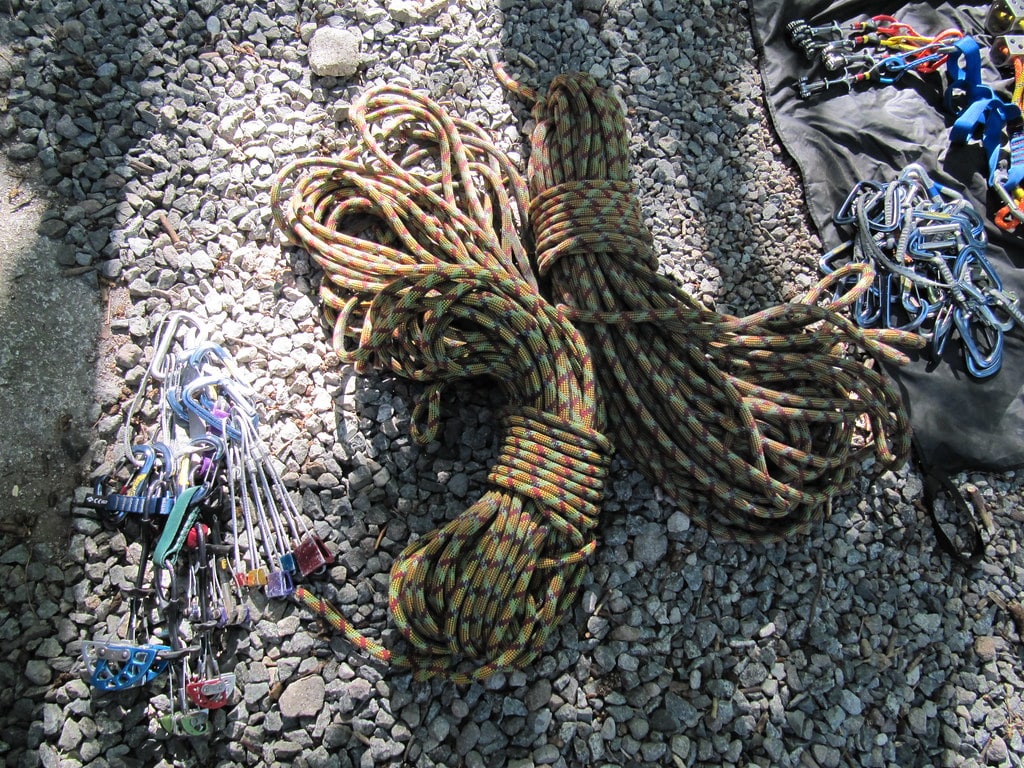
When it comes to trad climbing, having the right gear is crucial for a safe and enjoyable climbing experience. In this section, we will explore the essential gear needed for trad climbing, including a climbing helmet, trad protection gear, tailoring your gear rack, and choosing the right rope.
Climbing Helmet
A climbing helmet is an essential piece of gear for trad climbing, as it offers protection for your head from falling objects and impact with the rock during falls. Wearing a helmet can greatly reduce the risk of head injuries and provide peace of mind while tackling challenging routes. Ensure that your helmet fits properly and is comfortable to wear throughout your climb. For more information on climbing helmets, refer to our article on trad climbing helmets.
Trad Protection Gear
Trad protection gear, such as cams, nuts, slings, and other devices, is used to protect yourself during a climb by placing them in cracks and fissures along your route. These pieces of gear act as temporary anchors, allowing you to safely progress while protecting against potential falls. It’s important to have a variety of gear sizes to accommodate different crack widths and rock types. Familiarize yourself with the different types of protection gear available and learn proper placement techniques. For more information, check out our article on trad climbing protection.
Tailoring Your Gear Rack
Tailoring your gear rack involves selecting and carrying the appropriate gear for each climb. Carrying too much gear can make climbing more difficult, while carrying too little can lead to dangerous situations. Consult guidebooks or local climbing resources to determine the required gear sizes for the specific route you plan to climb. Understanding the gear requirements will help you optimize your gear rack and ensure you have the necessary equipment for a successful climb. Learn more about tailoring your gear rack in our article on trad climbing tradrack.
Choosing the Right Rope
Choosing the right rope is crucial for trad climbing. While single ropes are suitable for most trad climbing situations, depending on the climbing location and route, half ropes may be a safer choice. Half ropes offer the advantage of redundancy, allowing climbers to clip into separate ropes for added security. Consider factors such as rope diameter, length, and weight when selecting a rope. It’s also important to regularly inspect and maintain your rope to ensure its integrity and safety. For more information on choosing the right rope for trad climbing, refer to our article on trad climbing ropes.
By ensuring you have the right gear for trad climbing, including a climbing helmet, trad protection gear, a tailored gear rack, and the appropriate rope, you’ll be well-prepared for your climbing adventures. Remember to always prioritize safety and stay up-to-date with the latest techniques and gear advancements in the world of trad climbing. Happy climbing!
Trad Climbing vs. Sport Climbing
When it comes to climbing, there are various styles and disciplines to explore. Two popular forms of climbing are trad climbing and sport climbing. Understanding the key differences, mental and physical challenges, and safety considerations between the two can help climbers make informed decisions about their preferred climbing style.
Key Differences
Trad climbing, short for traditional climbing, is typically done outdoors on a mountainside or rock face, while sport climbing can take place both outdoors and in climbing gyms. One of the fundamental differences lies in the reliance on protection. Trad climbers have to create their own anchors using gear such as chocks and camming devices that they strategically place along their chosen route. In contrast, sport climbers rely on preplaced bolts for safety, which they clip into as they ascend the route (Pelican).
Another distinction is the level of planning involved. Trad climbers have the freedom to choose their own route, assessing the rock quality and finding the best path to reach the summit or the next ledge or site. Sport climbers, on the other hand, typically follow a preplanned route with preplaced bolts, providing a clear path to follow (Pelican).
Mental and Physical Challenges
Trad climbing and sport climbing present different mental and physical challenges. Trad climbing is considered more mentally challenging as climbers have to rely on their technical climbing skills and problem-solving abilities to navigate the route. They must assess the rock quality, find suitable placements for protection, and make calculated decisions about their progression. This style of climbing requires a strong understanding of gear placement and anchor building techniques to ensure safety and stability (Pelican).
Sport climbing, on the other hand, places a greater emphasis on physical strength and endurance. The focus is on climbing the route efficiently, with climbers challenging themselves to overcome difficult moves and maintain stamina. While sport climbing still requires mental focus and strategy, the primary objective is to complete the route using strength and agility (Pelican).
Safety Considerations
Safety is always a paramount concern in climbing. Trad climbing requires climbers to have a solid understanding of gear placement, anchor building, and evaluating the rock quality. It is essential to assess the reliability of placements and ensure that they can withstand potential falls. Climbers must also be proficient in building solid anchor systems to protect themselves and their partners during the ascent and descent (Pelican).
Sport climbing, with its preplaced bolts, provides a higher level of perceived safety. However, it is crucial for climbers to understand when to trust a bolt and when additional protection is necessary. Proper clipping techniques and knowledge of belaying and rappelling techniques are essential for maintaining safety in sport climbing (Pelican).
To ensure a safe and enjoyable climbing experience, it’s important for climbers to receive proper training, be knowledgeable about their gear, and practice good judgment in both trad and sport climbing scenarios. Always prioritize safety and stay up-to-date on the latest techniques and guidelines.
By understanding the distinctions between trad climbing and sport climbing, climbers can choose the style that aligns with their preferences, goals, and skill levels. Both styles offer unique challenges and rewards, allowing climbers to explore and conquer the heights in their own way.
Tips for Beginner Trad Climbers
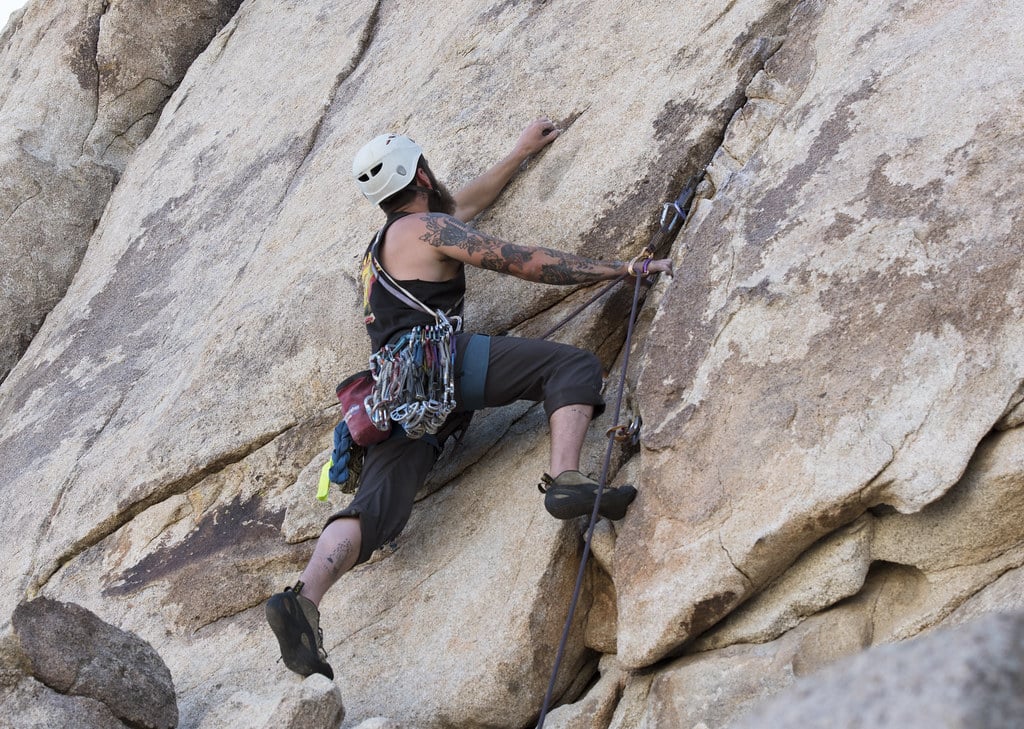
If you’re new to trad climbing, it’s important to develop the necessary skills and knowledge to ensure a safe and enjoyable experience. Here are some tips to help you get started:
Building Solid Anchor Systems
In trad climbing, being able to build solid anchor systems is crucial for your safety. Before attempting any climbs, take the time to learn proper anchor building techniques. This includes understanding various anchor configurations, such as the equalized anchor, and practicing tying appropriate knots like the figure-eight knot or the clove hitch.
When building an anchor, it’s essential to assess the rock quality and select reliable placements for your gear. Always consider redundancy by using multiple pieces of protection to ensure redundancy and strength. For detailed guidance on anchor building, check out our article on trad climbing anchor building.
Practicing Gear Placement
Placing gear correctly is a fundamental skill in trad climbing. To become proficient at gear placement, spend time practicing in controlled environments, such as climbing gyms or on easy routes outdoors. Familiarize yourself with different types of protection, such as cams, nuts, and hexes, and learn how to assess their suitability for different rock formations.
While placing gear, pay attention to proper alignment, positioning, and orientation to maximize the strength and security of each placement. Seek guidance from experienced climbers or consider taking a course to enhance your gear placement skills.
Climbing with Experienced Partners
Climbing with experienced partners is an excellent way to learn the ropes of trad climbing. They can provide guidance, share their knowledge, and help you develop the necessary skills for safe and efficient climbing. Climbing with experienced partners also allows you to observe their techniques and learn from their experiences.
However, it’s important to note that even experienced climbers can make mistakes. Always practice critical thinking, question techniques, and continue to educate yourself about safety protocols. Remember, climbing is a continuous learning process, and seeking guidance from experienced climbers is just one part of your journey.
By focusing on building solid anchor systems, practicing gear placement, and climbing with experienced partners, you can develop the foundational skills needed for trad climbing. Remember to always prioritize safety and continuously improve your knowledge and techniques. Happy climbing!
For more trad climbing tips and information, check out our comprehensive guide on trad climbing tips

